Portal:Tornadoes
The Tornadoes Portal
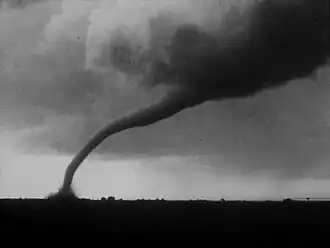
Tornadoes are violently rotating columns of air that are in contact with the Earth and either a cumulonimbus or a cumulus cloud. Tornadoes are often referred to as twisters, whirlwinds, or cyclones. While most tornadoes attain winds of less than 110 miles per hour (180 km/h), are about 250 feet (80 m) across, and travel a few miles (several kilometers), the wind speeds in the most intense tornadoes can reach 300 miles per hour (480 km/h), are more than two miles (3 km) in diameter, and stay on the ground for dozens of miles (more than 100 km). Various types of tornadoes include the multiple vortex tornado, landspout, and waterspout. Other tornado-like phenomena that exist in nature include the gustnado, dust devil, fire whirl, and steam devil. Most tornadoes occur in North America (in the United States and Canada), concentrated in a region nicknamed the Tornado Alley. Tornadoes also occur in South America, South Africa, Europe, Asia, and Oceania.
Selected tornado article -
On December 18–20, 1957, a significant tornado outbreak sequence affected the southern Midwest and the South of the contiguous United States. The outbreak sequence began on the afternoon of December 18, when a low-pressure area approached the southern portions of Missouri and Illinois. Supercells developed and proceeded eastward at horizontal speeds of 40 to 45 miles per hour (64 to 72 km/h), yielding what was considered the most severe tornado outbreak in Illinois on record so late in the calendar year. Total losses in the state were estimated to fall within the range of $8–$10 million. (Full article...)
Selected tornado list -
This is a list of all tornadoes that were confirmed by local offices of the National Weather Service in the United States in May 2011. Following the record tornado activity in April, during which 773 tornadoes struck the United States, May exhibited an unusually low number of tornadoes for the first three weeks. Only isolated events occurred until May 9, when five tornadoes struck Nebraska and South Dakota. A small outbreak of 16 tornadoes occurred across the Central United States, with EF0 to EF1 tornadoes caused mainly minor damage across states such as Nebraska, Iowa, and Missouri. The following few days saw isolated tornadoes strike Nebraska, Louisiana, Ohio, Maryland, and Colorado. Scattered weak tornadoes on May 19 impacted Texas, Oklahoma, Kansas, and Colorado, while six more weak tornadoes occurred on May 20. This included an EF1 tornado in Prairie County, Montana, which damaged a ranch.
Activity then abruptly increased with a prolonged and violent tornado outbreak sequence taking place from May 21–26, resulting in 178 fatalities. An EF3 tornado struck Reading, Kansas on May 21, resulting in severe damage and one fatality. An EF5 tornado in Joplin, Missouri resulted in 158 fatalities on May 22, becoming one of the deadliest tornadoes in United States history. This tornado was the most severe of the outbreak, and it caused catastrophic damage across southern portions of the city of Joplin. Elsewhere on May 22, another person was killed by an EF1 tornado that struck Minneapolis, Minnesota and surrounding suburbs, and a high-end EF3 tornado moved from Delaware County, Oklahoma to McDonald County, Missouri, with numerous homes being destroyed. On May 24, a significant outbreak took place in Oklahoma and Arkansas, with another EF5 tornado and two EF4 tornadoes striking areas around Oklahoma City. These three tornadoes resulting in ten fatalities and nearly 300 injuries. Another EF4 tornado moved through Denning, Arkansas just before midnight, with four additional deaths. May 25 featured a large number of tornadoes across Missouri, Illinois and Indiana, with several more tornadoes in other states. This activity continued into the next day, when an EF3 tornado impacted part of St. Tammany Parish, Louisiana and injured four people. (Full article...)
Selected image -
Selected tornado year -
(Full article...)
Related portals
2025 tornado activity

In the late evening hours of May 16, 2025, a large and deadly EF4 tornado moved through the Kentucky cities of Somerset and London. The tornado, which was on the ground for almost an hour and a half, killed nineteen people and injured 108 others along a 60 mi (97 km) track. The tornado produced damage that was rated EF4 by the National Weather Service in Jackson, Kentucky. This violent tornado occurred as part of a major tornado outbreak that spanned from May 15 to 16.
The supercell that produced this tornado initiated over 400 miles (640 km) away in the south-central Missouri Ozarks region. The supercell produced few tornadoes along its track through Missouri, Illinois, and Kentucky, including a small but intense EF3 tornado that brought destructive impacts to the area south of the village of Blodgett, several homes suffered major damage, mobile homes were destroyed, trees were snapped. Two fatalities occurred and ten others were injured. Afterwards, the supercell crossed the Ohio River into Kentucky. The supercell produced a brief EF1 tornado near Lamasco and an EF2 tornado near Allegre, damaging or destroying several mobile homes and outbuildings. After the London tornado dissipated, the supercell eventually got absorbed into the mesoscale convective system.
The tornado first touched down in central Russell County, initially causing minor damage to trees and infrastructure before quickly intensifying to EF3 strength, inflicting major damage to a home near Whittle. The tornado weakened and shrunk after crossing into Pulaski County. After crossing Cumberland Lake, the tornado struck the southern side of Somerset at low-end EF3 intensity, inflicting severe to major damage to several homes and businesses. After leaving the city, the tornado tore through parts of the Daniel Boone National Forest at mid-range EF3 to low-end EF4 intensity, shredding and snapping several trees and destroying a couple of homes as the tornado entered Laurel County. The tornado then impacted the southern side of London at low-end EF4 intensity, inflicting catastrophic destruction to several homes and neighborhoods, resulting in several fatalities. The tornado dissipated shortly after near the community of Lida. The tornado was on the ground for 90 minutes and tracked for 60 miles (97 km). (Full article...)
Tornado anniversaries
August 20
- 1928 – A tornado outbreak resulted in nine deaths across the Upper Midwest. An F4 tornado moved through Austin, Minnesota and caused near-F5 damage to a farm near Glenville, killing six people and injuring 60. Five died in Austin. An F3 tornado killed two people in Twin Lakes, Iowa, where debris from destroyed cottages reportedly filled the eponymous lakes. Another F4 tornado killed an infant on a farm near Ellsworth, Iowa.
- 1970 – An F3 tornado struck Sudbury, Ontario, with little warning, killing six people and causing CAD $17 million in damage. Weather authorities were initially reluctant to classify this event as a tornado.
- 2009 – A tornado outbreak produced 19 tornadoes across southern Ontario. An F2 tornado killed a child in Durham and injured several other people. Two F2 tornadoes (one of them possibly F3) hit Vaughan, damaging over 600 homes.
August 21
- 1521 – The earliest documented tornado in the Americas struck Tlatelolco near Tenochtitlan, now Mexico City, during the final days of the Fall of Tenochtitlan.
- 1883 – A devastating F5 tornado hit Rochester, Minnesota, killing at least 37. Many others were seriously injured and may have died later. More than 135 homes in Rochester were destroyed and at least 10 farms outside of town were leveled.
- 1918 – An F4 tornado destroyed much of Tyler, Minnesota, killing 36 people, and damaging or destroying about 600 homes and businesses.
August 22
- 1851 – A tornado moved through Arlington, Medford, and Malden near Boston, Massachusetts, destroying well-built homes and injuring six people.
- 1964 – A tornado outbreak hit the Midwestern United States. An F4 tornado hit Port Washington, Wisconsin, injuring 30 people. The tornado mostly moved a treetop level, but destroyed homes where it fully touched down. A house was split in two while a baby sleeping inside was left undisturbed.
Did you know…
- ...that the 2013 Moore tornado that struck Moore and Newcastle, Oklahoma, is the most recent EF5 tornado as of August 2025?
- ...that the 2021 South Moravia tornado, an IF4 tornado with winds between 207–260 mph (333–418 km/h), was the strongest tornado to hit the Czech Republic in modern history?
- ...that five of the six people killed in the 2011 Cullman–Arab tornado were members of the same family?
- ...that Picher, Oklahoma, was hit so hard by a tornado in 2008 that it would become a ghost town in 2015?
- ...that the 2022 Andover tornado injured only three people, despite damaging more than 1,000 buildings?
General images -
 Featured Article or List -
Featured Article or List -
(Full article...)
Topics
Subcategories

Related WikiProjects
The scope of WikiProject Severe weather is to write articles about severe weather, namely thunderstorms and tornadoes. Their talk page is located here.
WikiProject Weather is the main hub for all articles that are weather-related. WikiProject Weather strives to improve articles in a variety of weather topics, including Tropical Cyclones, Severe Weather, General meteorology, Non-tropical Storms, Climate, Floods, Droughts and wildfires, Meteorological instruments and data, Meteorological Biographies, and Space Weather. If you would like to help, please visit the project talk page.
WikiProject Meteorology is a collaborative effort by dozens of Wikipedians to improve the quality of meteorology- and weather-related articles. If you would like to help, visit the project talk page, and see what needs doing. The project is currently being merged into WikiProject Weather.
WikiProject Tropical cyclones is a daughter project of WikiProject meteorology. The dozens of semi-active members and several full-time members focus on improving Wikipedia's coverage of tropical cyclones.
Wikipedia is a fully collaborative effort by volunteers. So if you see something you think you can improve, be bold and get to editing! We appreciate any help you can provide!
Things you can do
 |
Here are some tasks awaiting attention:
|
Wikimedia
The following Wikimedia Foundation sister projects provide more on this subject:
-
Commons
Free media repository -
Wikibooks
Free textbooks and manuals -
Wikidata
Free knowledge base -
Wikinews
Free-content news -
Wikiquote
Collection of quotations -
Wikisource
Free-content library -
Wikiversity
Free learning tools -
Wikivoyage
Free travel guide -
Wiktionary
Dictionary and thesaurus

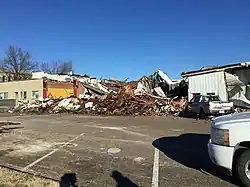


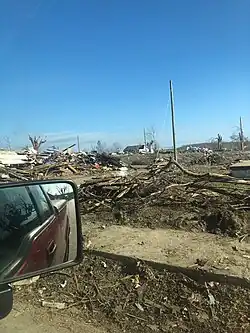

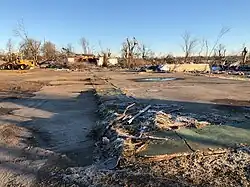

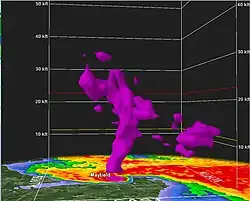


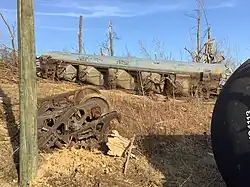

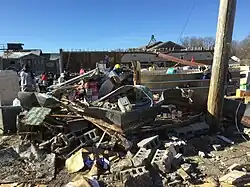
.jpg)








